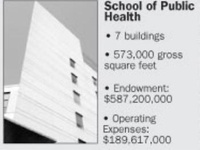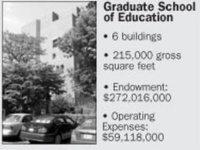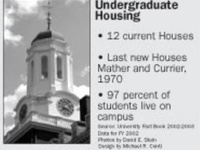A science hub, undergraduate housing and two relocated graduate schools will anchor Harvard’s new campus in Allston, University President Lawrence H. Summers announced yesterday.
The outline for Allston—which came in the form of an open letter from Summers to the Harvard community—ended years of speculation about the future of 200 acres of land across the Charles River.
At the year’s first Faculty meeting yesterday, professors sharply critiqued details of the proposal, which was released in the letter just a few hours before. But they did not challenge the plan’s central vision—creating an expansive science presence in Allston.
Professors at the meeting criticized everything about the plan from the process behind it—which one said was not consultative enough—to the possibility that the plan would lead to what another called the “splintering” of the Faculty of Arts and Sciences (FAS).
Summers’ plan calls for an interdisciplinary science campus integrating scientists working under the banners of FAS, Harvard Medical School (HMS) and the School of Public Health—the last of which would move to Allston in its entirety along with the Graduate School of Education.
The plan also calls for more graduate student housing in Allston and for the creation of “culture and community” through the potential move of museums and the construction of restaurants and shops.
Under the plan’s final point, which at the meeting Summers called “perhaps more speculative but possibly of the greatest importance in the long run,” Allston would be home to undergraduate student space, including one or more new Houses.
The plan closely mirrors a set of recommendations presented to Summers and his top deans at their mid-summer retreat.
Although Summers calls all of the plan’s points “working hypotheses,” they mark the most concrete public statement the administration has yet made on Allston’s future.
Summers said in an interview yesterday he hoped groundbreaking on the new campus could begin in “a few years,” but said he had not determined whether the first buildings would be for housing or for new programs.
Summers appointed several top administrators to lead task forces charged with making more detailed recommendations on the plan’s main points.
University planners will now take as given that long-term expansion of science cannot take place in Cambridge, and that alternative possibilities for Allston—such as anchoring a campus around a relocated Law School—have been discarded.
Though plans are in the works for expanded science space in Cambridge, Summers wrote in the letter that “even assuming we fulfill those plans over the next several years, we will before long confront an insufficiency of space for science.”
Summers’ plan does not detail whether existing parts of HMS or FAS will move or whether the science campus will consist of only new initiatives.
Within FAS, the Division of Engineering and Applied Sciences (DEAS) is a likely candidate for a cross-river move.
Read more in News
Conservative Activist Pulls for Permanent Tax Cuts
















